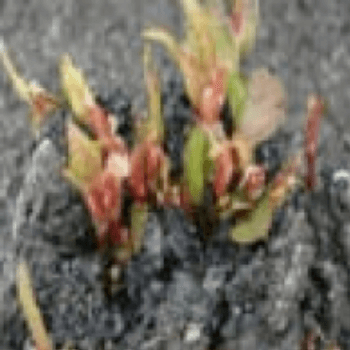
INNSA Standard
REMOVAL OF JAPANESE KNOTWEED FROM SOIL OR CONTAMINATED MATERIAL
The physical removal of Japanese knotweed rhizome refers to the manual or mechanical separation of Japanese knotweed rhizome from the growing medium for disposal off-site. This method aims to significantly reduce the amount of material taken off site. this system may be suitable for sites which do not have time for longer-term solutions and / or where space is at a premium. This system often utilises bespoke machinery specifically designed for the processing of materials into two or more fractions.
Prior to any works being undertaken, a full Japanese knotweed management plan should be prepared and authorised by a suitably-qualified and experience professional. The area of Japanese knotweed infestation should be suitably demarcated to prevent access and disturbance by site traffic and operatives. Disturbance, especially during inclement conditions, may lead to further cross-contamination. At this time, a suitable static “screening zone” should be identified, this area should ideally be fenced from the main site and located on a solid area within close proximity to the Japanese knotweed infestation.
Where possible, excavation should take place from outside of the area of the infestation to prevent plant tracks or tyres coming into contact with Japanese knotweed contaminated soil. When working on large infestations or tight sites, this may not be possible. In this scenario, consideration should be given to laying a temporary blinding layer of suitable material or sacrificial root barrier to prevent contact between Japanese knotweed material and plant. As a last resort, plant and machinery coming into contact with Japanese knotweed contaminated material should be thoroughly inspected and decontaminated by a suitable qualified person prior to further movement on site.
Excavation should proceed to the extent of the rhizome network. When supervised by a suitably-qualified person, the volume of excavated material can be significantly reduced compared to the previous Environment Agency recommendation of 7m of soils in all directions. On completion of each stage of the excavation, further material should be loosened and inspected for the presence of Japanese knotweed material.
During the excavation process, removed material should be transported to the screening zone in manageable quantities, as stockpiling contaminated material in inclement weather may lead to delays or may even render the material unsuitable for screening. Where all the contaminated material needs to be excavated before screening can commence, stockpiles should be protected with a waterproof covering.
Material passed through the screening machinery will be split into multiple fractions of material, typically oversize, mid size and fines. The material will then pass through a secondary system (e.g. conveyor belt) which will enable mechanical or manual removal of rhizome material.
Contaminated material should be segregated into containers and sealed where possible, before removal from site.
When no further Japanese knotweed material is encountered and after the screening process is complete, the excavation may be prepared for backfilling or subsequent works. It is essential that any screen material (soil) is suitably managed because it may still contain smal fragments of rhizome. Consideration should be given to relevant waste management licenses, permits and the CL:AIRE Code of Practice before any re-use and / or burial of soils on site.
This can be managed by either the specification of a capping layer at, or storage in a waste management area which can then be monitored and treated with herbicide if necessary (as per the INNSA Standard – Creating a Waste Management Area for Japanese Knotweed).
The final depth of rhizome penetration and material processed may vary dependent on ground conditions and porosity. It is essential that all material is removed and screened unless it is proposed that a suitable root barrier is to be subsequently installed.
It is recommended that a herbicide monitoring regime is implemented following any excavation works in case any small fragments of Japanese knotweed rhizome remain in the soil. Suitable herbicides applied by qualified persons can prevent the growth from small rhizome fragments from becoming re-established.
Japanese knotweed material to be transported off-site is considered a controlled waste. It is essential that a full set of duty of care and waste transfer paperwork is in place to confirm material has been managed in an appropriate manner. Any persons transporting Japanese knotweed soils must be a registered waste carrier and a copy of their license should be presented to the waste producer prior to works commencing.
The chosen landfill operator must be licensed to accept Japanese knotweed and it is the waste producer’s responsibility to ensure that the contaminated material is transported and disposed of correctly. Records of how the material was transported must be kept in case any appointed representative of the relevant local agencies wishes to verify the waste’s final location.
Further information on your responsibilities in relation to waste can be found at https://www.gov.uk/managing-your-waste-an-overview
